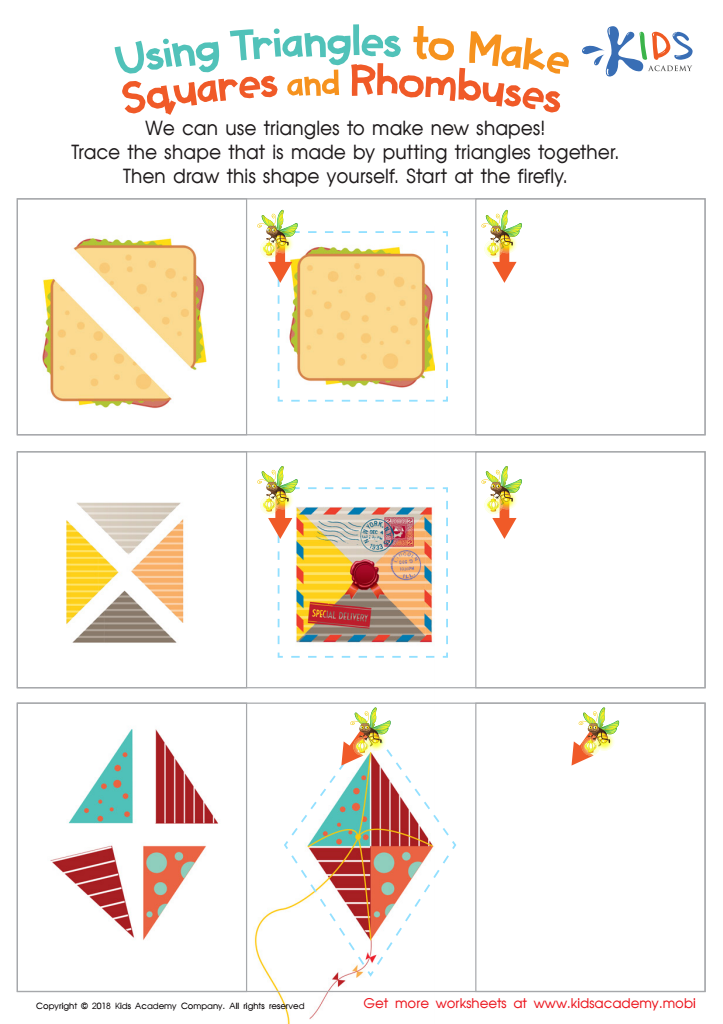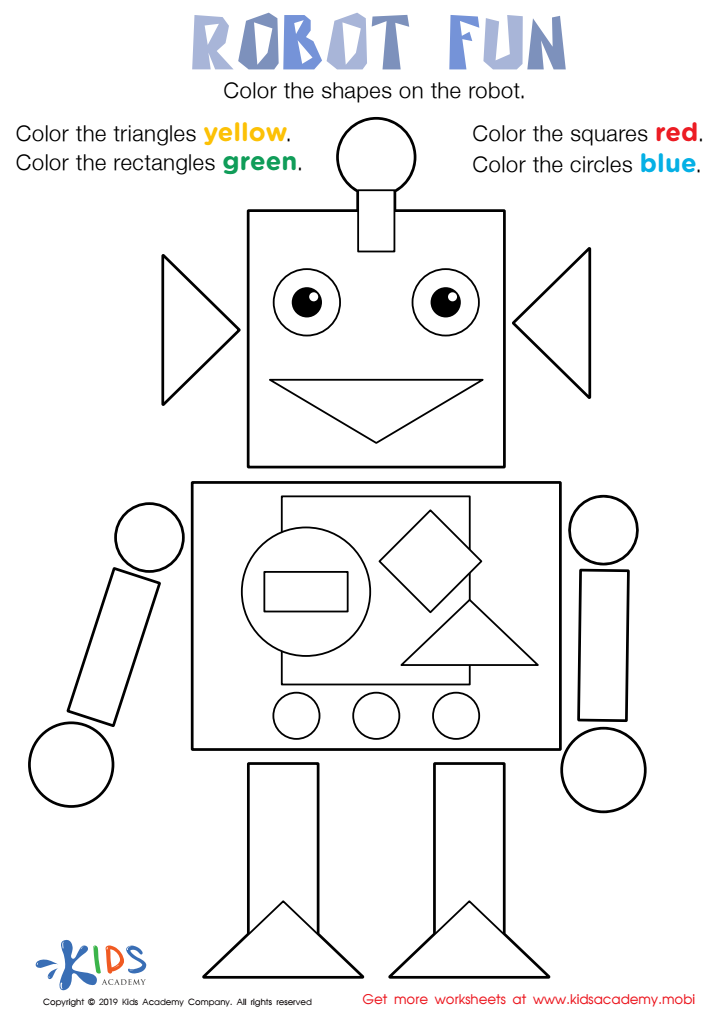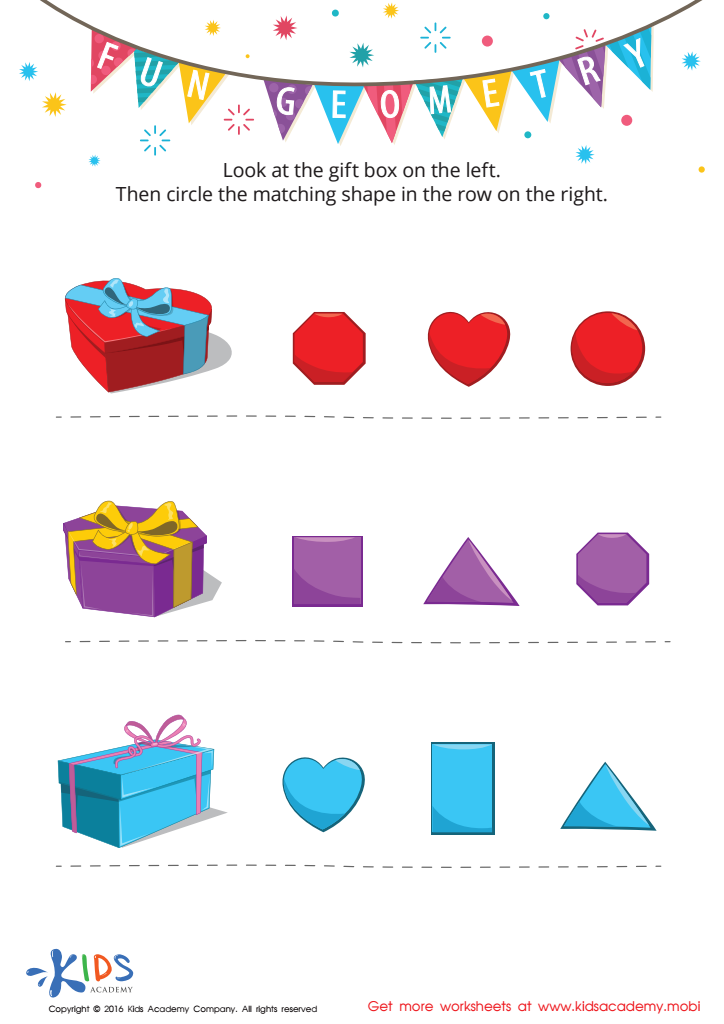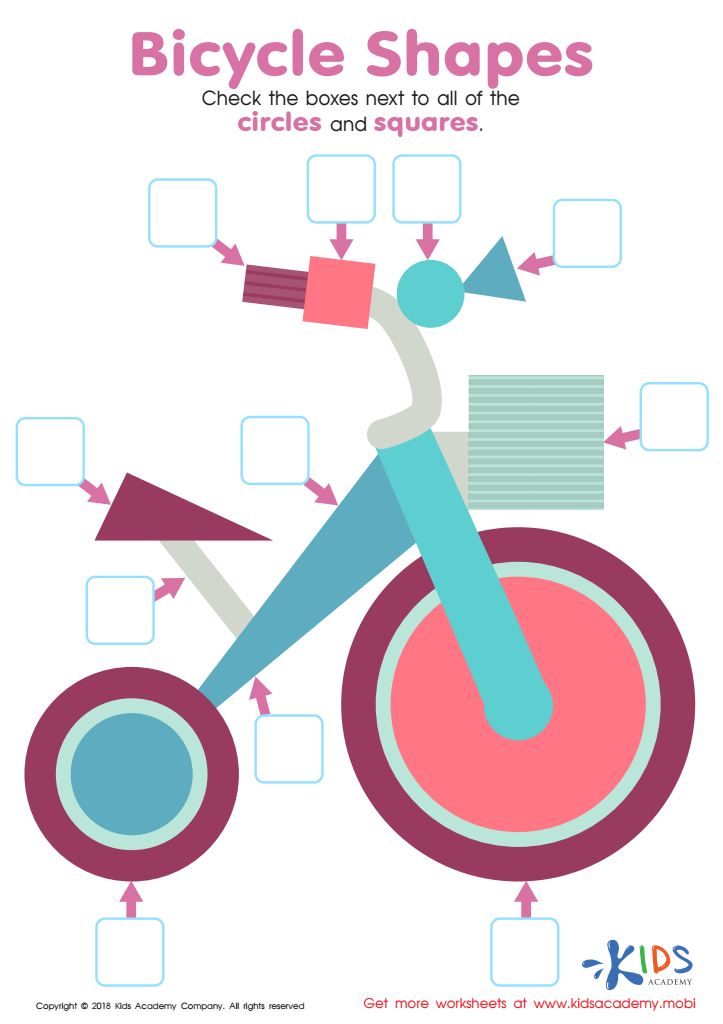Counting practice Geometry Worksheets for 5-Year-Olds
5 filtered results
-
From - To
Welcome to our Counting Practice Geometry Worksheets for 5-Year-Olds! Designed to engage young learners, these printable worksheets combine the fundamentals of counting with essential geometric shapes. Children will explore various activities that promote number recognition and counting skills while learning about circles, squares, triangles, and more. Through interactive exercises, they will match shapes with their corresponding quantities, enhancing both their mathematical and spatial awareness. Perfect for homeschooling, classrooms, or supplemental practice, these worksheets make counting fun and educational. Empower your little ones to develop confidence in math with our vibrant and engaging geometry counting practice worksheets!


Using Triangles to Make Squares and Rhombuses Worksheet


Robot Fun Worksheet


Let's Look! Part 2 Worksheet


Fun Geometry Worksheet


Bicycle Shapes Worksheet
Parents and teachers should prioritize counting practice and geometry for 5-year-olds because these foundational skills play a crucial role in early mathematics development. At this stage, children are naturally curious and eager to explore their environment, making it the ideal time to introduce these concepts in engaging ways.
Counting practice helps develop number sense, allowing children to understand quantities, recognize patterns, and foster basic arithmetic skills. Mastering counting sets the groundwork for later mathematical concepts, making learning more accessible as they progress to complex tasks.
Geometry, on the other hand, introduces children to shapes, spatial relationships, and the properties of objects. Engaging in geometry helps foster critical thinking skills as children learn to categorize shapes and understand how they fit into their world. Activities such as shape sorting, building with blocks, and recognizing geometric patterns encourage problem-solving and enhance visual-spatial skills.
Furthermore, both counting and geometry encourage social interaction through cooperative play, enhancing language development and teamwork. By integrating counting and geometry into daily activities, parents and teachers can create a rich, supportive learning environment, effectively nurturing a child's cognitive and interpersonal skills for lifelong success in mathematics and beyond.
 Assign to My Students
Assign to My Students































